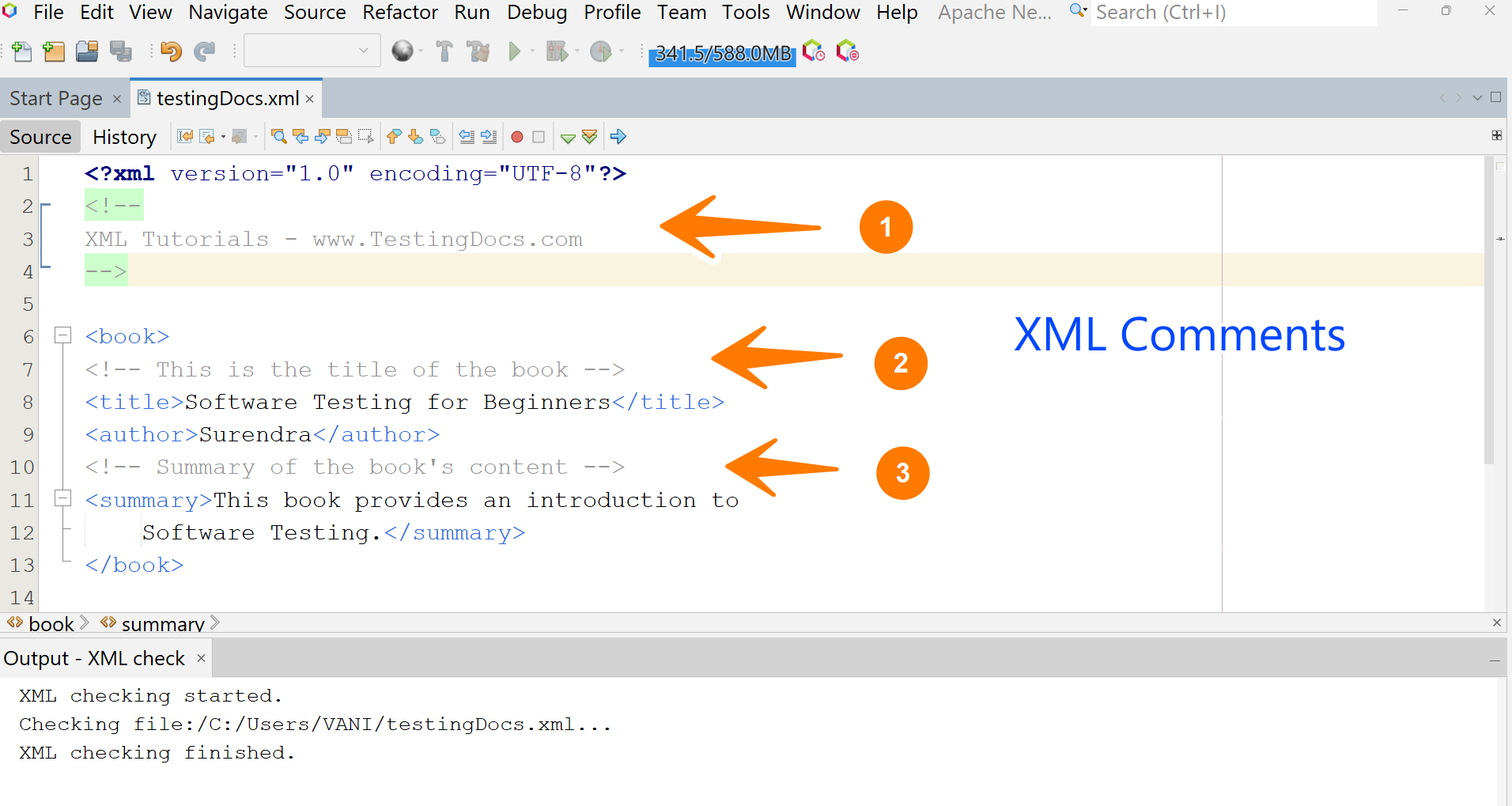XML Comments
Overview
XML comments are similar to comments in HTML. Writing comments in XML is similar to writing in HTML. They allow developers to include notes, explanations, or annotations within the XML data that do not affect the processing of the XML document.
XML Comments
Comments in XML can help improve the readability and maintainability of the document by allowing developers to describe their intent or clarify complex parts of the document structure.
Syntax
XML comments begin with <!– and end with –>. Anything written between these markers is considered a comment and is ignored by XML parsers.
Comments cannot be nested. IDEs generally highlight the comment text with a different color to enhance the readability of the XML document.
Example
<!– This is an XML comment –>
Comments can be placed almost anywhere in an XML document except inside tags or within attribute values. They are commonly used within the body of XML documents, either between tags or within complex structures, to clarify the purpose of certain elements.
<book>
<!– This is the title of the book –>
<title>Software Testing for Beginners</title>
<author>Surendra</author>
<!– Summary of the book’s content –>
<summary>This book provides an introduction to Software Testing.</summary>
</book>

The comment syntax in XML has a few restrictions:
The string — (double hyphen) must not appear within comments except as part of the closing –>.
Comments must not contain the sequence –> except at the very end to close the comment.
Uses
Some uses are as follows:
Documentation: To explain complex structures, relationships between elements, or the purpose of specific elements in an XML document.
Debugging: Temporarily commenting out blocks of XML to test or debug parts of the XML document during development.
Instructions: Provide guidelines for future developers or those maintaining the XML document.
XML comments allow for better communication within the development team and ensure that the XML document is easier to understand and maintain.
